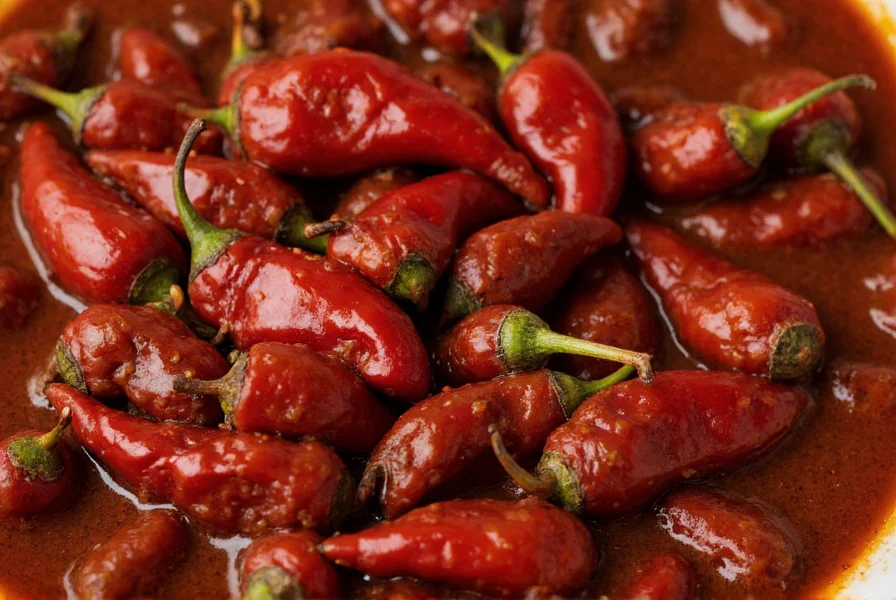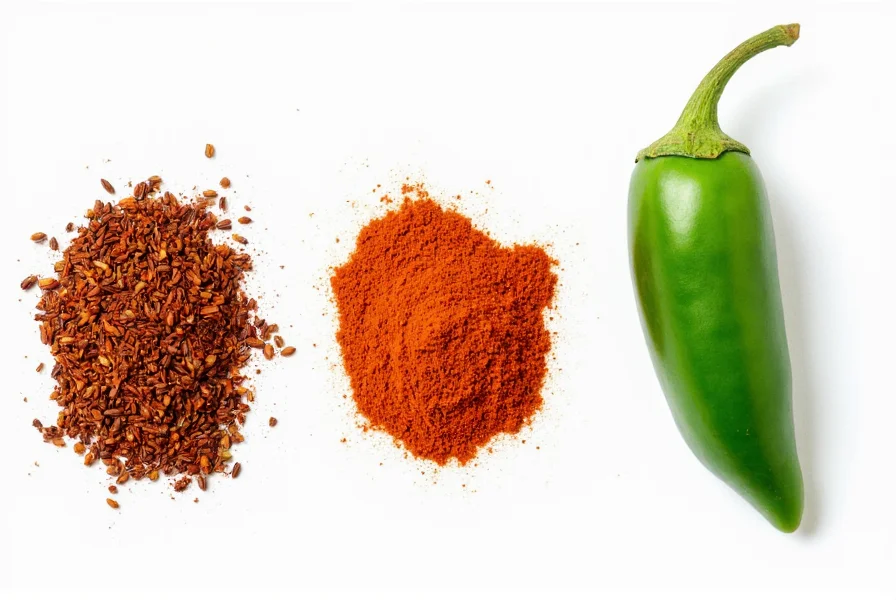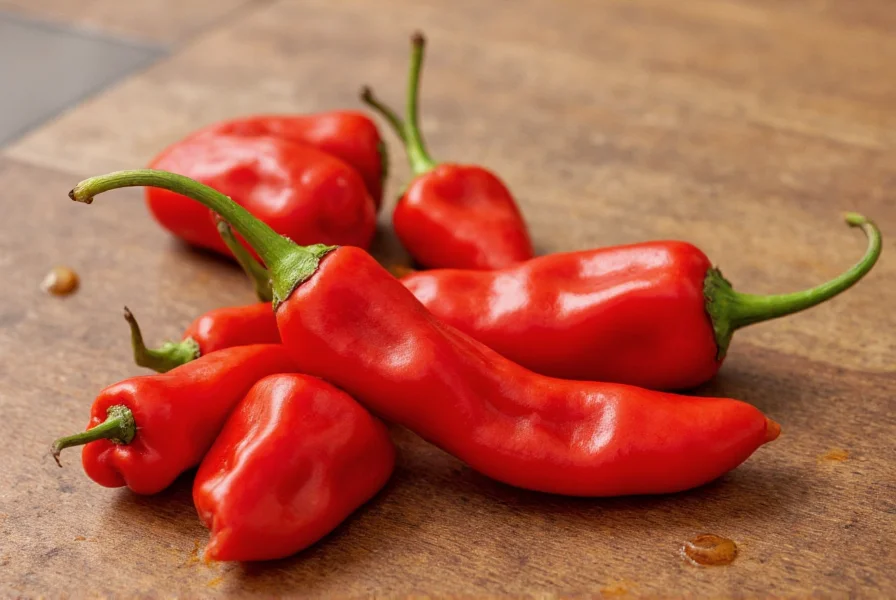Understanding chipotle peppers begins with recognizing their transformation process. Fresh red jalapeños undergo a smoking and drying procedure that concentrates their flavor while adding the characteristic smokiness that defines chipotles. This traditional preservation method dates back to pre-Hispanic Mesoamerica, where indigenous peoples developed smoke-drying techniques to extend the shelf life of their chili harvests.
Chipotle Pepper Characteristics and Varieties
While all chipotles start as jalapeños, their final form varies significantly based on processing methods. The two primary varieties you'll encounter are:
| Chipotle Type | Processing Method | Flavor Profile | Common Uses |
|---|---|---|---|
| Chipotle en Adobo | Canned in tomato-based adobo sauce | Smoky, tangy, slightly sweet with garlic notes | Sauces, marinades, braises |
| Morado Chipotle | Smoke-dried without adobo sauce | Pure smoky heat with earthy undertones | Rubbed on meats, ground into powder |
The heat level of chipotle peppers typically ranges from 2,500 to 8,000 Scoville Heat Units, placing them in the medium category—hotter than poblano peppers but milder than habaneros. The smoking process actually reduces capsaicin concentration slightly compared to fresh jalapeños, which explains why chipotles often seem less fiery despite their intense flavor.

Practical Culinary Applications
Mastering chipotle peppers in your kitchen requires understanding how to incorporate them effectively. When using canned chipotles in adobo, professional chefs recommend these techniques:
- Start small: One pepper often suffices for four servings; remove seeds and membranes to reduce heat
- Bloom flavors: Sauté chopped chipotles in oil before adding liquids to intensify smokiness
- Balance acidity: The adobo sauce contains vinegar, so reduce other acidic ingredients accordingly
- Preserve leftovers: Freeze unused peppers in ice cube trays with adobo sauce for future use
For authentic Mexican dishes like ropa vieja or mole colorado, chipotle peppers provide the foundational smokiness that defines these recipes. In contemporary cooking, innovative chefs use chipotle peppers to add depth to unexpected applications like chocolate desserts, where the heat complements cocoa's natural bitterness.
Chipotle Peppers Compared to Similar Ingredients
Many home cooks confuse chipotle peppers with other smoky chili products. Understanding these distinctions prevents recipe failures:
- Chipotle vs. smoked paprika: While both provide smokiness, chipotles deliver actual heat (2,500-8,000 SHU) whereas smoked paprika ranges from sweet (0 SHU) to hot (5,000 SHU) varieties
- Chipotle vs. jalapeño: Fresh jalapeños offer bright, grassy heat without smokiness; chipotles provide concentrated, earthy smokiness with mellowed heat
- Chipotle vs. guajillo: Guajillos are dried mirasol peppers with fruitier, less smoky flavor and comparable heat (2,500-5,000 SHU)

Effective Substitutions When Chipotle Peppers Aren't Available
When your recipe calls for chipotle peppers but you don't have them on hand, consider these alternatives based on what aspect of chipotle you need to replicate:
- For smokiness without heat: Use 1 teaspoon smoked paprika per chipotle pepper
- For heat without smokiness: Substitute 1 fresh jalapeño (seeds removed) per chipotle
- Closest overall substitute: Combine ½ teaspoon chipotle powder + ½ teaspoon tomato paste + few drops liquid smoke
- For adobo sauce flavor: Mix 1 tablespoon tomato paste, 1 minced garlic clove, ½ teaspoon vinegar, pinch of cumin
Remember that chipotle powder (made from ground morado chipotles) provides intense smokiness without the moisture content of canned varieties, so adjust liquid ingredients when substituting.
Storage and Handling Best Practices
Proper storage maintains chipotle pepper quality and prevents waste. Canned chipotles in adobo keep for 1-2 months refrigerated in airtight containers. For longer storage, freeze individual peppers in adobo sauce using ice cube trays, then transfer frozen cubes to freezer bags—this preserves quality for up to 6 months.
When handling chipotles, always wear gloves to prevent capsaicin burns. The oils penetrate skin easily and can transfer to eyes or other sensitive areas. If you experience burning, apply milk or oil rather than water, which spreads the capsaicin.
Nutritional Profile and Health Considerations
Chipotle peppers retain most nutritional benefits of fresh jalapeños while adding smoke-derived compounds. One canned chipotle pepper (15g) typically contains:
- 15 calories
- 1g fiber (4% daily value)
- 20% of daily vitamin C needs
- Significant capsaicin content with potential metabolic benefits
Research suggests capsaicin may boost metabolism and provide anti-inflammatory effects, though these benefits require consistent consumption rather than occasional culinary use. The adobo sauce adds minimal sodium (about 50mg per pepper) compared to many processed foods.
Frequently Asked Questions
What exactly is a chipotle pepper?
A chipotle pepper is a smoke-dried ripe jalapeño pepper. The smoking and drying process transforms the fresh green jalapeño into a reddish-brown pepper with a distinctive smoky, medium-heat flavor profile ranging from 2,500-8,000 Scoville units.
How do chipotle peppers differ from jalapeños?
Chipotle peppers are actually smoke-dried jalapeños. Fresh jalapeños are green, grassy, and bright with immediate heat, while chipotles are reddish-brown with concentrated, earthy smokiness and slightly mellowed heat due to the smoking process.
Can I make my own chipotle peppers at home?
Yes, though it requires specific equipment. To make authentic chipotle peppers, you need ripe red jalapeños and a smoker. Smoke the peppers at 200°F for 6-8 hours until they're leathery but not brittle. Without proper smoking equipment, the results won't match commercially produced chipotles.
Why are chipotle peppers usually sold in adobo sauce?
Adobo sauce (a blend of tomatoes, vinegar, garlic, and spices) preserves the rehydrated chipotle peppers while enhancing their flavor. The sauce creates a balanced flavor profile that complements the smokiness, making the peppers more versatile for immediate culinary use.
How spicy are chipotle peppers compared to other common chilies?
Chipotle peppers range from 2,500-8,000 Scoville Heat Units, placing them in the medium category. They're hotter than poblanos (1,000-2,000 SHU) but milder than habaneros (100,000-350,000 SHU). The smoking process slightly reduces capsaicin concentration compared to fresh jalapeños.











 浙公网安备
33010002000092号
浙公网安备
33010002000092号 浙B2-20120091-4
浙B2-20120091-4